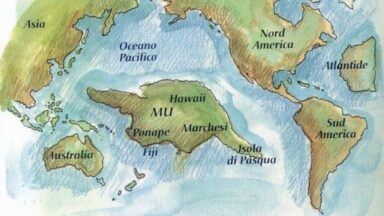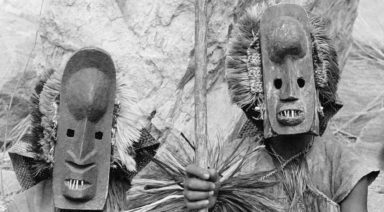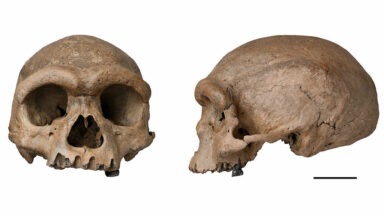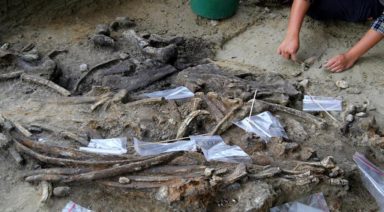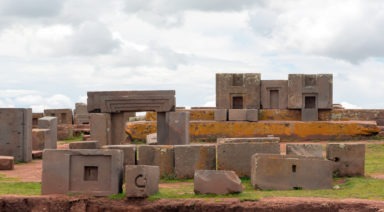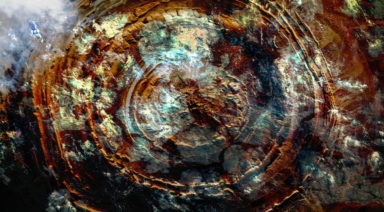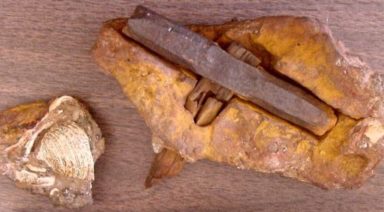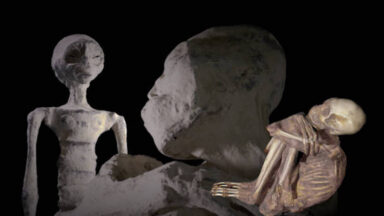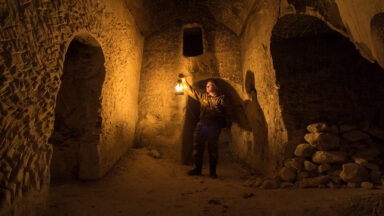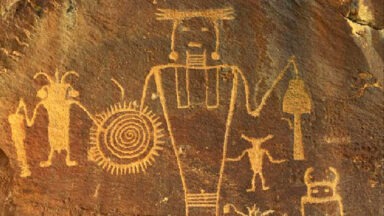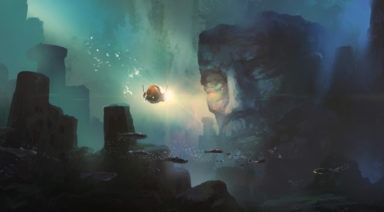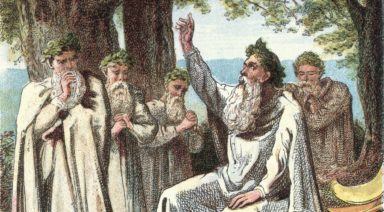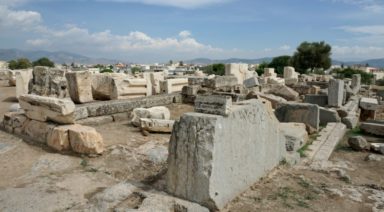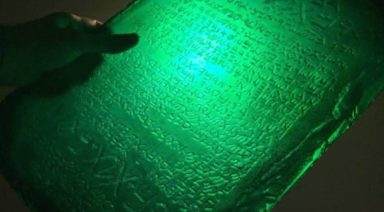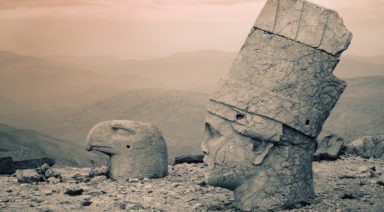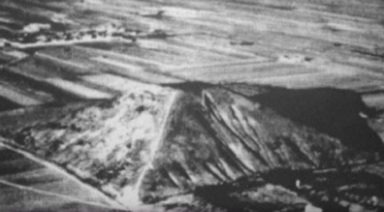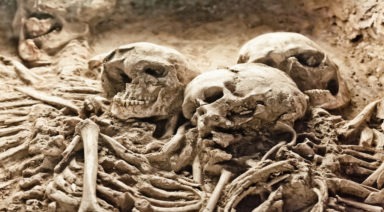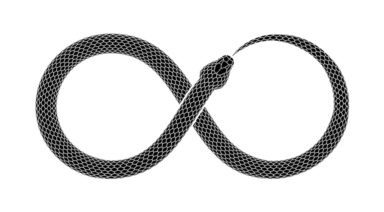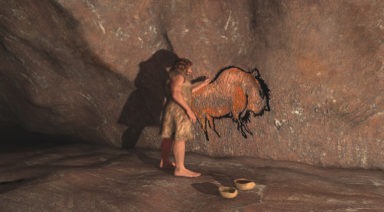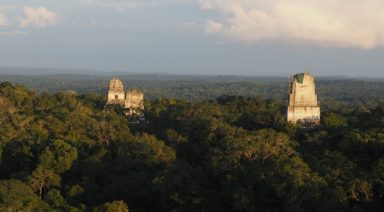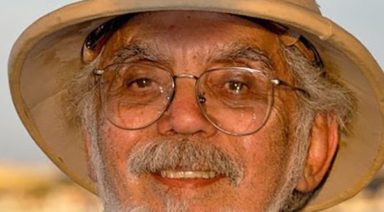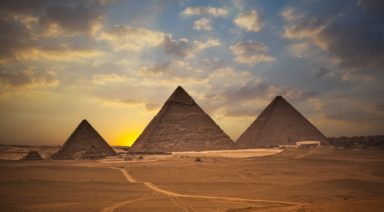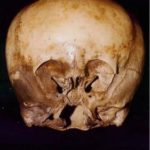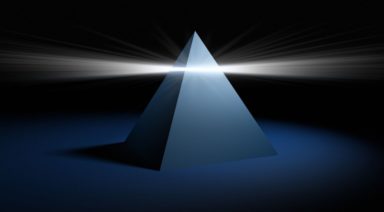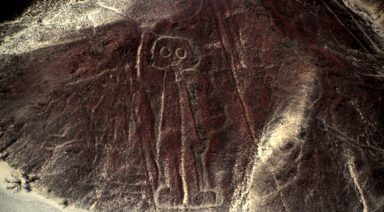The Many Branches of the Tree of Life
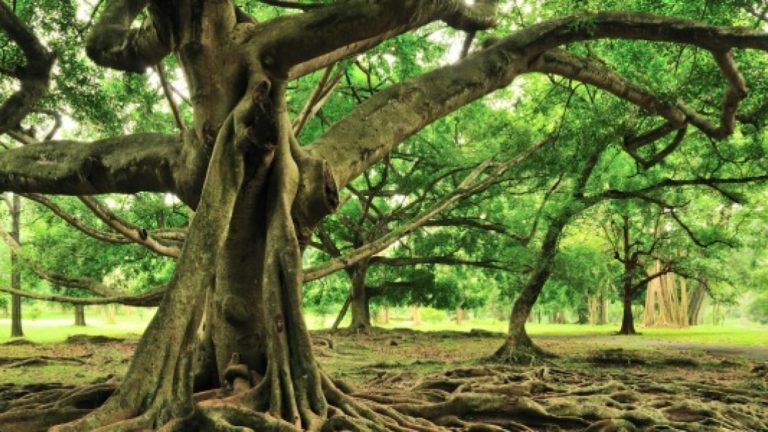
Whether you are a fervent reader of religious texts, fan of mythology, or frequenter of Disney World’s Animal Kingdom, in some way or another, you are probably familiar with the concept of the Tree of Life.
Because the Tree of Life has had myriad origin stories, symbols, and meanings over time and across cultures, the many branches of its history offer complex truths about nature.
By taking a closer look at the many ways the Tree of Life manifests itself throughout the world, we might better understand how this piece of nature has risen to such stature throughout our society and continues to be such a well-known symbol revered by many.
Origins of the Tree of Life
To find the seed of the Tree of Life, we must dive into the places where it first appears: religious texts. In this case, the Bible offers an initial reference to the Tree of Life.
The earliest account of the Tree of Life is mentioned in Genesis 2:8-9, when describing the Garden of Eden — there it is called the source of eternal life. It reappears in the last book of the Bible, Revelations, as part of a new garden of paradise.
However, the Christian faith is far from the only religion or belief system to make reference to a Tree of Life. In Islam, it is called the Tree of Immortality, and in Judaism, Etz Chaim, which is Hebrew for tree of life. Other references appear in Hinduism, Buddhism, and paganism.
Of course, the tree of life also has roots in metaphysical studies as well, as we will touch on further below.
Tree of Life Meaning
Due to the diverse places in which a Tree of Life is mentioned, the Tree of Life meaning varies depending on what lens you look through.
Here we will take a look at just a few definitions of the Tree of Life according to different religious traditions and beliefs.
Biblical / Christian
As mentioned above, in Christianity, the Tree of Life has significance in that it is said to have been the vehicle used by evil in the form of a snake that encouraged Adam and Eve to eat from the Tree of the Knowledge of Good and Evil, which was forbidden.
However, the body of Jesus Christ has also been referred to as the Fruit of the Tree of Life in the Catholic faith. The cross on which he died was called the Tree of Life as well, since Jesus’ death is viewed by Christians as a sacrifice that then delivered eternal life to those who believe in him.
Kabbalah
In the Jewish mystical tradition of Kabbalah, the Tree of Life has two different symbols: upside down and right side up. These two placements are said to have distinct meanings — the original being upside down, with “roots flowing from the divine place of unity and infinite light,” which is also referred to as the Tree of Emanation.
However, the other Tree of Life symbol goes the other direction — back toward the source. In this depiction, the roots go into the ground and limbs toward the sky, indicating evolution or initiation.
These depictions are also said to depict Sephirot, or emanations of the soul.
Metaphysical
The metaphysical meaning of the Tree of Life is clear — indicating each being is a child of the Universe, with a right to exist and a responsibility to be oneself.
Because Metaphysics ties the natural world with the spiritual, the Tree of Life in this case represents a Cosmic Family tree of stores, demonstrating the links between people and with the past, including where people have merged, split off, and rejoined.
Tree of Life Symbology
Being that the Tree of Life is such a pervasive symbol for people from many backgrounds, it is worth investigating more of its symbolism and meaning.
While it is called the Cosmic Tree, the World Tree, and the Holy Tree, among other names, its symbolic meaning of strength, wisdom, protection, beauty, and redemption might hold true across many belief systems.
In the Christian faith, the writers of Proverbs reference the Tree of Life with four truths, including wisdom, righteousness, fulfilled hope, and a wholesome tongue.
In more metaphorical sense, the Tree of Life can represent natural creation, as in Kabbalastic mysticism — with a complete map of the soul and its attributes.
Tree of Life Today
Other clues about the Tree of Life may be found in Sacred Geometry, which also credits roots, flowers, and fruits with the Tree of Life label, based on their healing qualities and diversity.
Today, the Tree of Life is still revered as a divine metaphor, as studies of sacred geometry note, “the way a seed becomes a tree and bears fruit, the One creator unfolds into the Many forms of manifest existence.”
While many meanings and explanations of the Tree of Life’s structure have been gathered already, it remains a point of study for those in the metaphysical community.
Summary and Conclusion
Obviously, the Tree of Life’s origins, meanings across different belief systems, and symbolism open up many avenues for further explanation of this grandiose symbol.
It may be the case that to truly understand the Tree of Life entirely, one must abandon the notion of following one school of thought, and instead merge the many ideas presented over time to get a comprehensive sense of what the Tree of Life means historically, religiously, mythologically, and spiritually.
You may even find exploring many different individuals’ interpretations, insights, and visual renderings of the Tree of Life can open up different notions about this powerful symbol.
Want more like this article?
Don’t miss Ancient Civilizations on Gaia to journey through humanity’s suppressed origins and examine the secret code left behind by our ancestors.
The Story of Mu, the Lost Continent of the Pacific
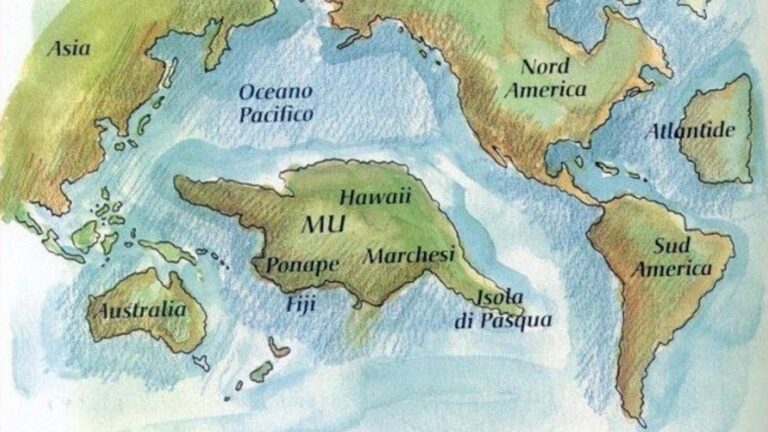
Mu was an ancient civilization that existed in a vast region of the Pacific Ocean, long before Lemuria or Atlantis. According to various traditions, it was a culture deeply connected with the energies of the planet and with a way of life centered on consciousness and balance. In this article, we explore what Mu was, its origins, evolution, and its role within the spiritual journey of humanity.
Table of Contents
- What Was the Continent of Mu?
- Origins and Evolution of Mu
- The Civilization of Mu and Its Main Characteristics
- Spiritual Society and Connection with the Divine in Mu
- Mu and Lemuria: Similarities and Differences
- The Fall of the Lost Continent of Mu
- The Legacy of Mu in Ancestral Cultures Around the World
What Was the Continent of Mu?
The Mu continent was a vast territorial expanse located in the Pacific Ocean, where flourished one of the oldest and least understood civilizations on the planet. Its existence dates back to a stage when Earth had a much subtler vibration, and life forms functioned in synchronicity with the energetic laws of the cosmos. Instead of building a society based on the material, the inhabitants of Mu cultivated a deep awareness of their connection with the whole.
Far from being an expansionist or technologically dominant culture, the Mu civilization represented a model that valued balance, introspection, and vibrational frequency as pillars of its existence. Daily life was organized according to natural cycles and the energetic perception of the environment. Every act carried a spiritual charge, from rituals to the simplest tasks, and each action was understood as a form of resonance with the universe.
This civilization has not left obvious physical traces, but its influence subtly persists in ancestral stories, symbols, and spiritual teachings that appear across different cultures of the world. The marks of its wisdom can be recognized in ceremonial practices and knowledge about energy that point to an ancient humanity, connected with the divine through vibration and intention.
Origins and Evolution of Mu
The origins of the island of Mu go back to a stage when Earth was just beginning to stabilize its energetic field. According to different accounts, its first inhabitants did not arrive in ships or by physical means, but rather descended as forms of consciousness from subtler planes. They manifested gradually, adapting their existence as Earth’s vibration became denser.
At first, life in Mu was predominantly etheric. The beings of this civilization communicated through frequencies, perceived their environment in an expanded way, and did not need complex material structures. Matter was not a limitation, but a transitory tool. Over time, they began to organize around energetic centers from which they sustained the balance of the planet.
The evolution of Mu was not focused on external development but on inner refinement. Their purpose was not to conquer or accumulate power, but to act as guardians of a stable frequency that would benefit all humanity. Their technology was based on vibration, geometry, and a harmonious relationship with the natural elements. They did not build to dominate, but to amplify consciousness.
In the series Initiation, available on Gaia, Mu is described as a key civilization at the dawn of human history. It is explained there how this culture functioned as a bridge between higher planes of consciousness and physical experience, preparing the way for the appearance of civilizations such as Lemuria and Atlantis.
The Civilization of Mu and Its Main Characteristics
The civilization of Mu developed in a state of constant balance between the physical and the subtle. Their way of life was not governed by structures of power or material hierarchies, but by collective vibration and respect for natural cycles. Everything in their society responded to an energetic logic, and their organization reflected a deep knowledge of the universal flow.
- Vibrational consciousness: The inhabitants of Mu lived guided by the energetic frequency of the environment. Every act was measured by its vibrational impact, not by its material result.
- Nonverbal communication: The transmission of information took place through vibration, mental imagery, or sensation. Spoken language was secondary or nonexistent.
- Temples as energetic nodes: The structures were not ordinary buildings but centers of alignment with the planetary energy grid. They functioned as anchoring points of consciousness.
- Direct relationship with the elements: They not only venerated nature but interacted with it consciously. Water, fire, air, and earth were living forces with which they collaborated.
- Horizontal organization: There were no permanent figures of authority. Decisions were made by group resonance, following the wisdom of the shared energetic field.
- Interdimensional mobility: Some accounts suggest they had the ability to move between planes of reality—not by technological means, but through expansion of consciousness.
- Collective memory: Knowledge was not stored in objects or texts, but in the vibratory field of the group. Each member could access the shared wisdom through inner connection.
Spiritual Society and Connection with the Divine in Mu
Spirituality was not an isolated aspect of life in Mu: it was the base on which the entire experience was built. There were no institutionalized religions or intermediaries between beings and the divine. Each individual was considered a direct expression of universal consciousness, and daily life was a constant practice of sacred connection.
Rituals did not follow dogma or tradition but were conscious acts of energetic alignment. Everything had a vibrational purpose: from the ways of inhabiting, to sounds and movements. Through breathing, visualization, and intention, the people of Mu cultivated states of deep unity with creation.
This connection with the divine was not experienced as a distant goal, but as a present reality. Living in Mu meant recognizing that each thought generated form, that every action was an extension of the spirit, and that all matter was an expression of energy. This understanding guided every aspect of their civilization, in perfect coherence between consciousness and form.
Mu and Lemuria: Similarities and Differences
Both Mu and Lemuria were deeply spiritual civilizations, born at a time when humanity was more connected to the subtle dimensions of existence. Both shared a worldview based on energy, resonance, and harmony with nature. However, their way of life and their purpose had different nuances that set them apart.
Mu represented a more etheric and contemplative state. Its society was centered on sustaining a stable planetary frequency, functioning as a point of global balance. Lemuria, on the other hand, was a civilization more developed on a structural level, with greater interaction with other cultures and a practical focus on the use of vibrational technologies.
While Mu prioritized silence, inwardness, and attunement with higher planes, Lemuria organized itself into cities and transmitted knowledge through spiritual schools. Mu was the energetic foundation, Lemuria the conscious expansion. Both played an essential role in humanity’s evolution, but from different levels of the same path.
The Fall of the Lost Continent of Mu
The disappearance of Mu was not the result of war or internal collapse, but of a change in the vibration of the planet. As Earth’s energetic field became denser, the civilization of Mu—whose existence was based on subtle frequencies—began to dissolve. Matter gained prominence, and the consciousness that inhabited that plane could no longer be sustained under the new conditions.
There is talk of tectonic shifts, tidal waves, and geological transformations that may have altered the surface of the Pacific Ocean, causing much of Mu’s territory to sink. However, beyond the physical causes, what occurred was a vibrational transition: a stage of human consciousness came to an end, giving way to a more material one, with new lessons to integrate.
Before its dissolution, many of its inhabitants managed to relocate to other regions of the planet, carrying with them the seed of their wisdom. Their legacy was not destroyed but distributed. Fragments of that memory were imprinted in the energy of different places, ready to be awakened by future cultures that could recognize that frequency.
The Legacy of Mu in Ancestral Cultures Around the World
Although the civilization of Mu disappeared as an organized structure, its influence is still alive in different ancestral cultures that preserve fragments of its knowledge. In many Indigenous traditions, especially from Asia, Oceania, and the Americas, there are symbols, myths, and practices that reflect a similar understanding of the world to that which existed in Mu. It is not a copy, but a vibrational echo that continues to transmit its essence.
The ceremonial use of the elements, the construction of temples in energetic points, and the conception of the human being as a channel of universal energy are common aspects between these cultures and the wisdom of Mu. Also, the idea that knowledge is not transmitted only with words, but can be activated internally through resonance. These similarities are not coincidences—they are vestiges of the same original source.
In a world that values speed and accumulation, the memory of Mu invites us to return to the essential: the connection with the energy that sustains all form and the wisdom of living in harmony with it. It is not about reconstructing the past, but about remembering a way of existence where the spiritual and the everyday were not separate. Mu leaves us with a silent but powerful teaching: when life is organized from inner coherence, balance is not a distant ideal, but a possible experience.


